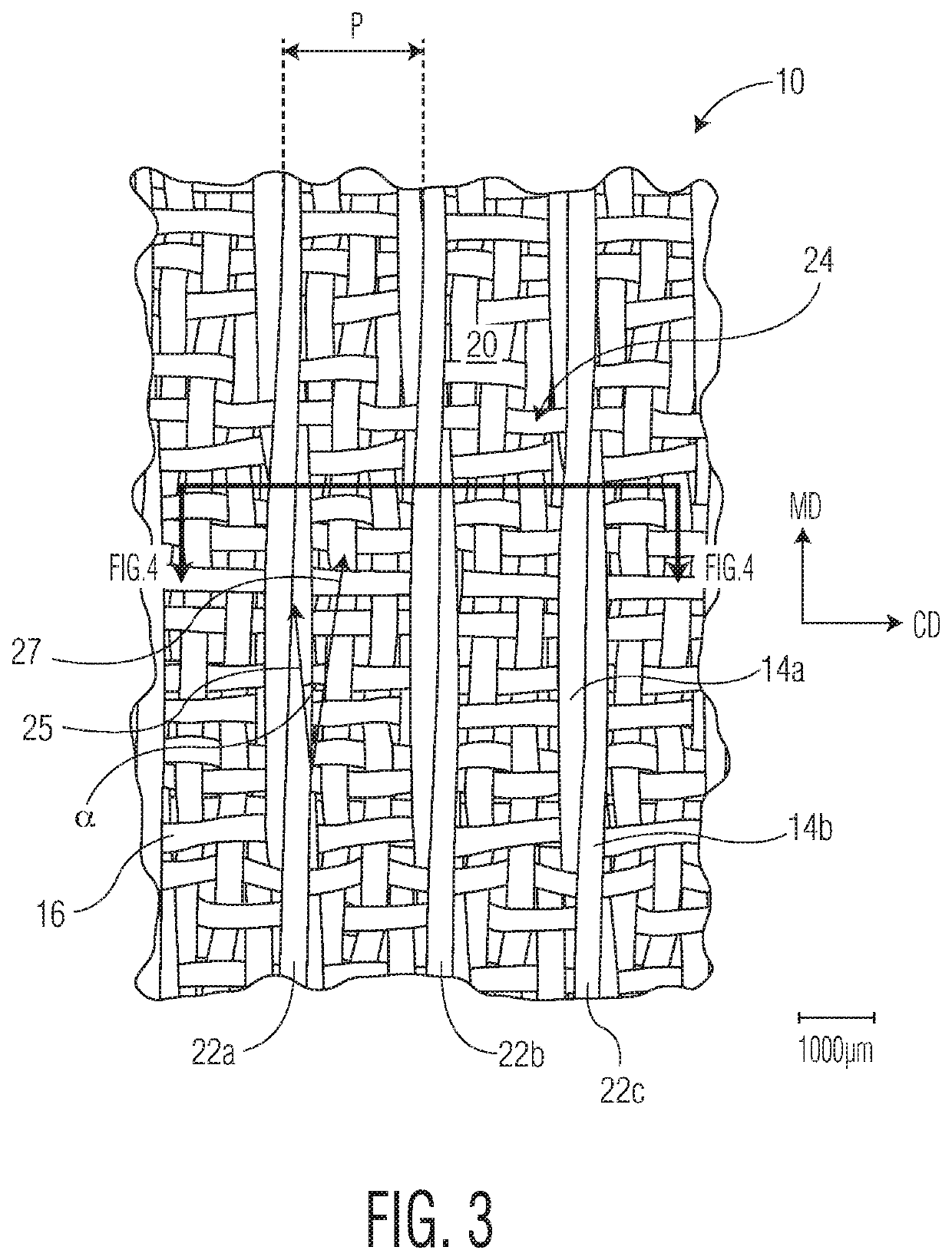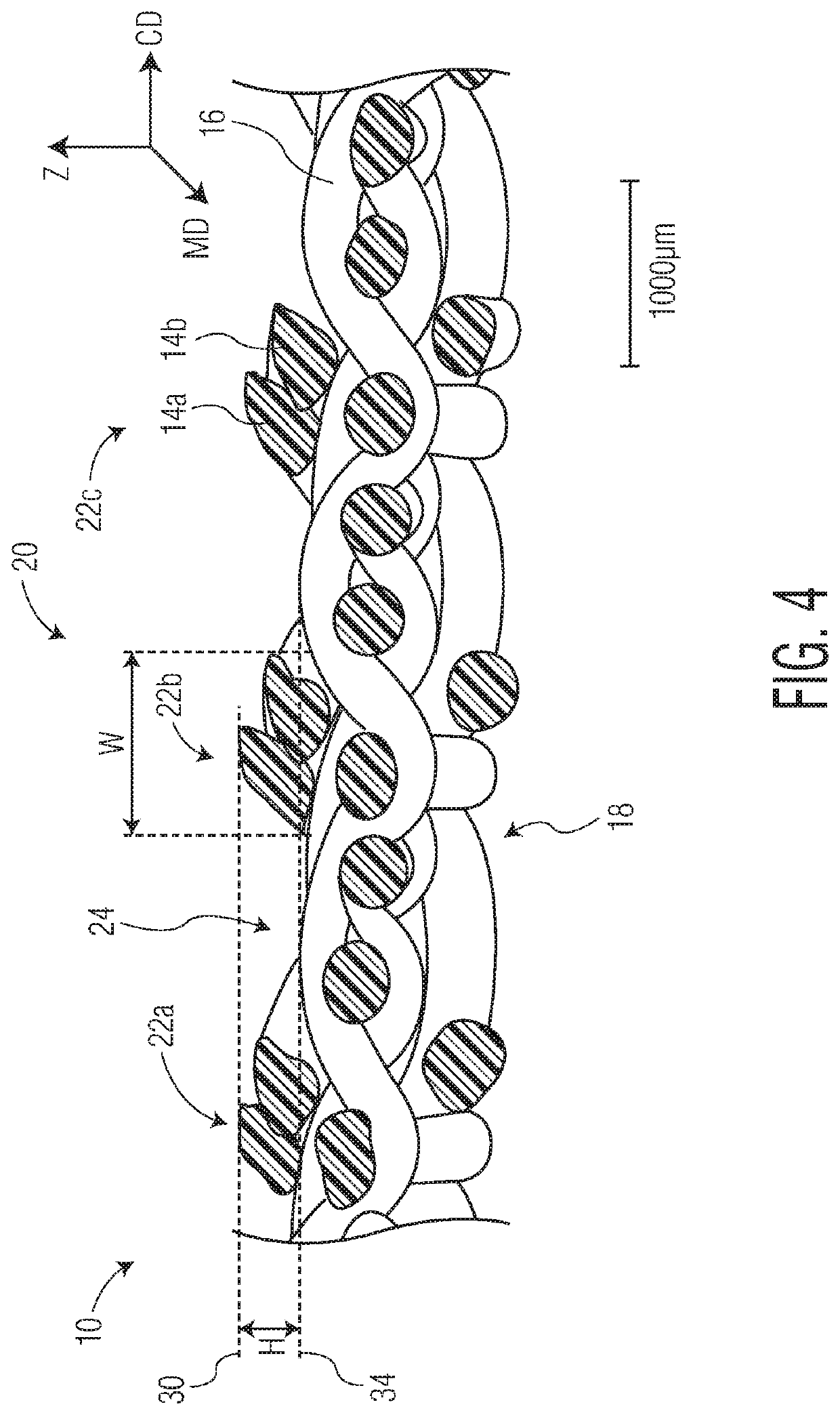Twill woven papermaking fabrics
a papermaking fabric and woven technology, applied in the field of papermaking fabrics, can solve the problems of small degree of variability, limited degree of orientation, and inability to weave ridges to a height, and achieve the effects of improving physical properties, wide breadth of designs, and superior fiber suppor
- Summary
- Abstract
- Description
- Claims
- Application Information
AI Technical Summary
Benefits of technology
Problems solved by technology
Method used
Image
Examples
embodiments
[0108]In a first embodiment the present invention provides a woven papermaking fabric having a machine direction axis and a cross-machine direction axis, the fabric comprising: a plurality of machine direction (MD) oriented warp filaments and a plurality of substantially cross-machine direction (CD) oriented shute filaments, the shute filaments being interwoven with warp filaments to provide a machine contacting fabric side and opposed web contacting fabric side, the web contacting fabric side having a plurality of protuberances disposed thereon, the plurality of protuberances each having a length, a height and an upper surface that is substantially planar, the plurality of protuberances having a non-zero element angle and spaced apart from one another to define a plurality of valleys there between. In certain instances the element angle may range from 0.5 to 20 degrees. In other instances the element angle may range from about −20 to −0.5 degrees.
[0109]In a second embodiment the pr...
PUM
| Property | Measurement | Unit |
|---|---|---|
| length | aaaaa | aaaaa |
| angle | aaaaa | aaaaa |
| wall angle | aaaaa | aaaaa |
Abstract
Description
Claims
Application Information
 Login to View More
Login to View More - R&D
- Intellectual Property
- Life Sciences
- Materials
- Tech Scout
- Unparalleled Data Quality
- Higher Quality Content
- 60% Fewer Hallucinations
Browse by: Latest US Patents, China's latest patents, Technical Efficacy Thesaurus, Application Domain, Technology Topic, Popular Technical Reports.
© 2025 PatSnap. All rights reserved.Legal|Privacy policy|Modern Slavery Act Transparency Statement|Sitemap|About US| Contact US: help@patsnap.com



